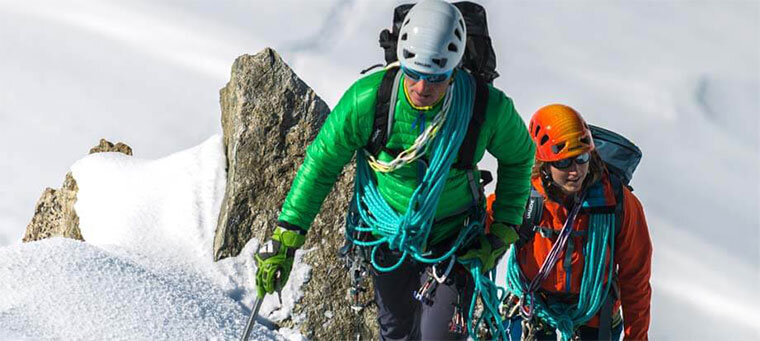To provide a clear overview of the different types of harness and demonstrate what the different features mean in practice, four climbers describe here what they want from their harnesses. As they are all interested in different types of climbing, we feel that this helps to illustrate the distinctions between the different types of climbing harnesses.
MARIUS – MOUNTAINEERING AND HIGH-ALPINE TRIPS
Marius is interested in the big summits. He travels to high peaks all over the world, both in summer and in winter. For this reason, he has a very adjustable harness that fits no matter how many layers he's wearing. He's less interested in classic rock climbing, although still enjoys scrambling up alpine ridges. As a mountaineer, his routes involve glacier crossings and exposed sections. Marius rarely needs to take a fall and seldom ends up hanging on a rope in his harness, so he prefers to wear a lightweight harness that gives him maximum comfort. He doesn't need extra padding – it would only get in the way on the long sections that don't involve climbing. As Marius usually carries a backpack, he makes sure that his harness has flexible gear loops at the back. He knows from experience that stiff gear loops rub under backpacks and can cause uncomfortable pressure points.
Marius prefers harnesses either with a laminated construction or made solely of webbing with three buckles and four gear loops. And those rear gear loops have to be flexible.









